-
 bitcoin
bitcoin $122288.232522 USD
0.16% -
 ethereum
ethereum $4480.662914 USD
-0.22% -
 xrp
xrp $2.962747 USD
-2.32% -
 tether
tether $1.000120 USD
-0.05% -
 bnb
bnb $1145.654223 USD
-2.07% -
 solana
solana $227.105217 USD
-1.67% -
 usd-coin
usd-coin $0.999548 USD
-0.02% -
 dogecoin
dogecoin $0.250875 USD
-2.04% -
 tron
tron $0.340654 USD
-0.49% -
 cardano
cardano $0.837968 USD
-2.52% -
 hyperliquid
hyperliquid $48.960449 USD
0.06% -
 chainlink
chainlink $22.049280 USD
-1.33% -
 ethena-usde
ethena-usde $1.000404 USD
0.02% -
 sui
sui $3.586212 USD
0.20% -
 avalanche
avalanche $29.894916 USD
-4.18%
How do I use Trezor for staking?
Trezor enhances staking security by keeping private keys offline while allowing safe interaction with staking platforms via compatible wallets like MetaMask.
Sep 28, 2025 at 12:54 pm
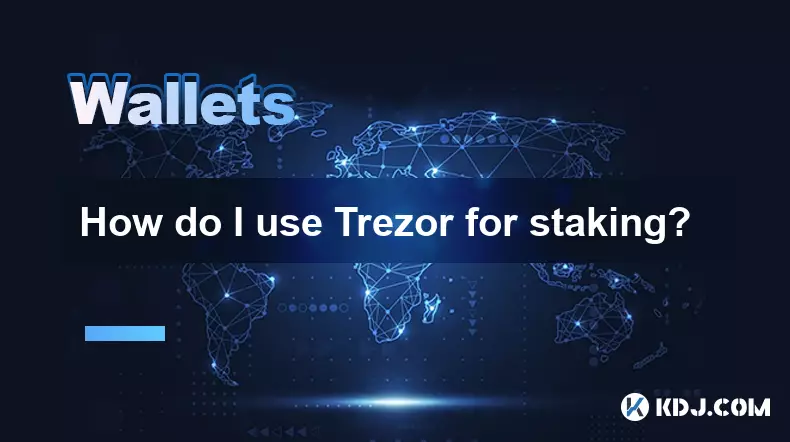
Understanding Trezor and Its Role in Staking
1. Trezor is a hardware wallet developed by SatoshiLabs, designed to securely store cryptocurrencies offline. It supports a wide range of digital assets including Bitcoin, Ethereum, and various ERC-20 tokens. While Trezor itself does not directly offer staking services, it plays a crucial role in securing private keys when users participate in staking through compatible platforms.
2. Staking involves locking up cryptocurrency to support blockchain network operations such as transaction validation. In return, participants earn rewards. Since staking requires interaction with decentralized applications (dApps) or staking pools, the security of private keys becomes paramount. This is where Trezor adds value—by keeping keys offline and protected from online threats.
3. To use Trezor for staking, users must connect it to third-party wallets or platforms that support both staking and integration with hardware wallets. Examples include Ledger Live (for certain coins), Trust Wallet, MetaMask, and dedicated staking dashboards like those on exchanges such as Kraken or Coinbase.
4. The device ensures that private keys never leave the secure environment of the hardware wallet. When signing transactions related to staking—such as delegation or withdrawal—Trezor prompts the user to confirm actions physically on the device, preventing remote access or phishing attacks.
5. Not all blockchains or staking protocols support direct integration with Trezor. Users need to verify compatibility before initiating any staking activity. For instance, Ethereum staking via Lido or Rocket Pool can be done securely when MetaMask is connected to Trezor and used to interact with these protocols.
Setting Up Trezor for Staking-Compatible Platforms
1. Begin by installing the Trezor Suite application from the official website. Ensure you are using genuine software to avoid malware risks. Connect your Trezor device via USB and follow the setup instructions, including setting a PIN and backing up the recovery seed securely.
2. Once set up, navigate to a supported wallet interface such as MetaMask. Import your Trezor wallet by selecting 'Hardware Wallet' and choosing Trezor as the provider. This links your hardware device to the web interface without exposing private keys.
3. After connecting, switch to the appropriate network—for example, Ethereum Mainnet if staking ETH. Confirm the network settings match the blockchain you intend to stake on. Misconfigured networks may lead to loss of funds.
4. Access a staking platform such as Lido, Rocket Pool, or a centralized exchange offering staking services. Make sure the site is legitimate and supports Trezor-signed transactions. Always double-check URLs to prevent phishing.
5. Initiate the staking process within the platform’s interface. When prompted to sign a transaction—like depositing ETH into a staking contract—your Trezor will display the details. Review them carefully on the device screen and approve only if accurate.
Earning Rewards and Managing Staked Assets
1. After successfully delegating or depositing funds, staking rewards accrue according to the protocol's rules. These rewards are typically distributed periodically and reflected in the connected wallet interface. The Trezor continues to protect the underlying keys throughout this process.
2. Some platforms issue liquid staking tokens (e.g., stETH for Lido) which represent staked assets plus accrued rewards. These tokens can be managed through the same wallet connected to Trezor, enabling further DeFi usage while still earning staking returns.
3. Withdrawals and claim operations also require transaction signing. Whenever initiating a reward claim or unstaking action, the request must be approved on the Trezor device itself. This ensures no unauthorized withdrawals occur even if the connected computer is compromised.
4. Regularly check the status of your staked assets through the platform’s dashboard. Monitor for slashing events (in proof-of-stake systems) or changes in validator performance if directly delegating to validators.
5. Keep your Trezor firmware updated through Trezor Suite. Updates often include security improvements and expanded coin support, enhancing overall safety during staking interactions.
Frequently Asked Questions
Can I stake directly from the Trezor Suite app?No, Trezor Suite does not currently support native staking features. It functions primarily as a wallet management and transaction-signing tool. You must use external platforms compatible with Trezor to perform staking activities.
Is it safe to connect Trezor to third-party staking interfaces?Yes, provided the websites are authentic and use secure connections. Since private keys remain inside the Trezor device, the risk of theft is minimized. Always verify URLs and avoid clicking on untrusted links.
What happens if I lose my Trezor device while staking?Your staked assets remain safe. Using the recovery seed, you can restore access to your wallet on another Trezor or compatible device. The blockchain record retains ownership, so funds are not lost as long as the seed is secure.
Which cryptocurrencies can I stake using Trezor?You can stake any cryptocurrency supported by both Trezor and an external staking service. Common options include Ethereum (ETH), Cardano (ADA), Polkadot (DOT), and Solana (SOL), depending on platform availability and integration level.
Disclaimer:info@kdj.com
The information provided is not trading advice. kdj.com does not assume any responsibility for any investments made based on the information provided in this article. Cryptocurrencies are highly volatile and it is highly recommended that you invest with caution after thorough research!
If you believe that the content used on this website infringes your copyright, please contact us immediately (info@kdj.com) and we will delete it promptly.
- BlockDAG, DOGE, HYPE Sponsorship: Crypto Trends Shaping 2025
- 2025-10-01 00:25:13
- Deutsche Börse and Circle: A StableCoin Adoption Powerhouse in Europe
- 2025-10-01 00:25:13
- BlockDAG's Presale Buzz: Is It the Crypto to Watch in October 2025?
- 2025-10-01 00:30:13
- Bitcoin, Crypto, and IQ: When Genius Meets Digital Gold?
- 2025-10-01 00:30:13
- Stablecoins, American Innovation, and Wallet Tokens: The Next Frontier
- 2025-10-01 00:35:12
- NBU, Coins, and Crypto in Ukraine: A New Yorker's Take
- 2025-10-01 00:45:14
Related knowledge
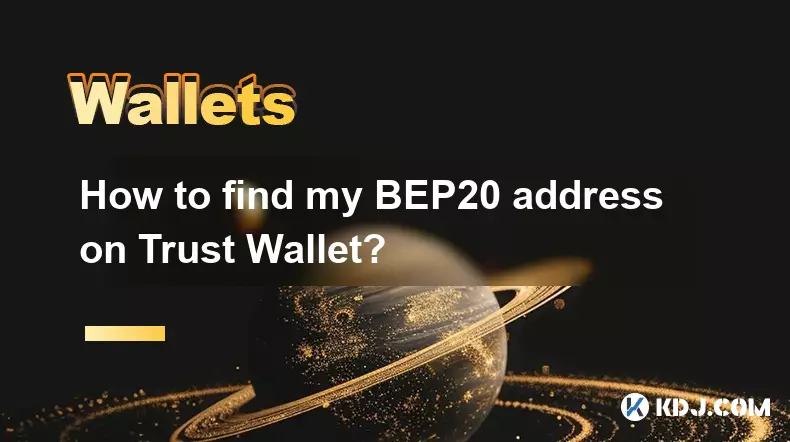
How to find my BEP20 address on Trust Wallet?
Oct 04,2025 at 06:19pm
Understanding BEP20 and Trust Wallet Compatibility1. Trust Wallet is a widely used cryptocurrency wallet that supports multiple blockchain networks, i...
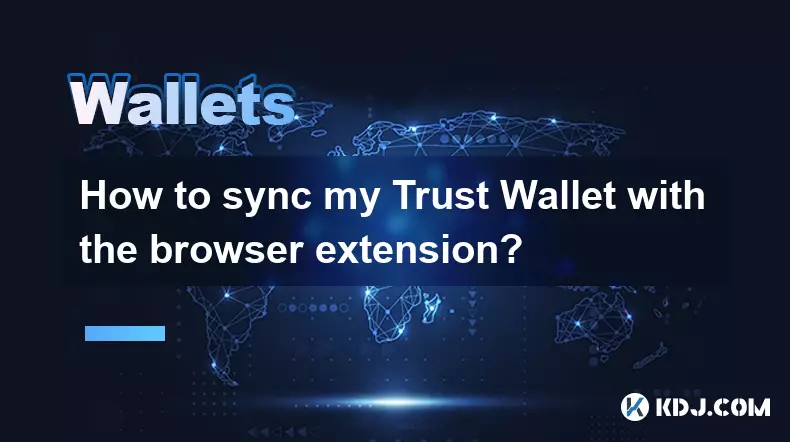
How to sync my Trust Wallet with the browser extension?
Oct 03,2025 at 06:19pm
Understanding Trust Wallet and Browser Extension IntegrationTrust Wallet is a popular non-custodial cryptocurrency wallet that supports a wide range o...
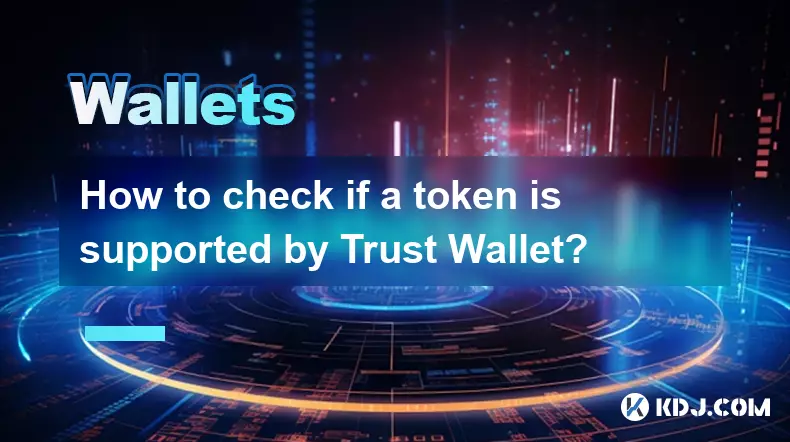
How to check if a token is supported by Trust Wallet?
Oct 04,2025 at 05:18am
Understanding Token Compatibility with Trust Wallet1. Trust Wallet supports a wide range of blockchain networks, including Ethereum, Binance Smart Cha...

How to get the Trust Wallet browser extension?
Oct 01,2025 at 12:37am
How to Access the Trust Wallet Browser Extension1. Visit the official Trust Wallet website through a secure internet connection. Navigate to the downl...

How to interact with a DApp using Trust Wallet?
Oct 02,2025 at 10:00pm
Connecting Trust Wallet to a DApp1. Open the Trust Wallet app on your mobile device and ensure your wallet is unlocked with access to your assets. Nav...
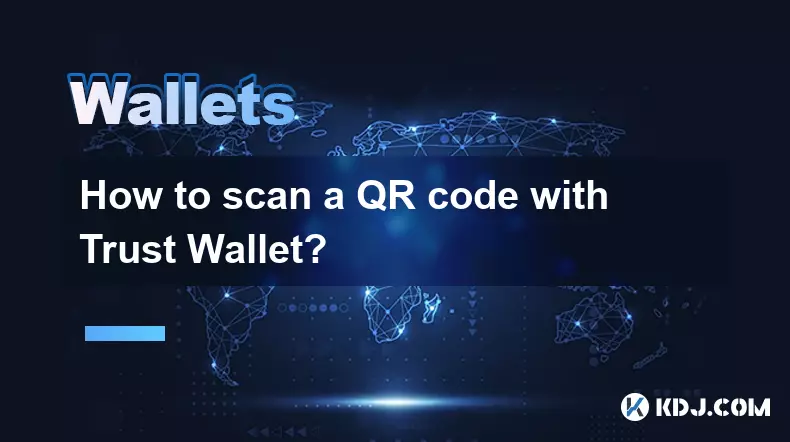
How to scan a QR code with Trust Wallet?
Oct 02,2025 at 03:37pm
Understanding QR Codes in Trust Wallet1. QR codes are widely used in cryptocurrency applications to simplify transaction processes. Trust Wallet lever...

How to find my BEP20 address on Trust Wallet?
Oct 04,2025 at 06:19pm
Understanding BEP20 and Trust Wallet Compatibility1. Trust Wallet is a widely used cryptocurrency wallet that supports multiple blockchain networks, i...

How to sync my Trust Wallet with the browser extension?
Oct 03,2025 at 06:19pm
Understanding Trust Wallet and Browser Extension IntegrationTrust Wallet is a popular non-custodial cryptocurrency wallet that supports a wide range o...

How to check if a token is supported by Trust Wallet?
Oct 04,2025 at 05:18am
Understanding Token Compatibility with Trust Wallet1. Trust Wallet supports a wide range of blockchain networks, including Ethereum, Binance Smart Cha...

How to get the Trust Wallet browser extension?
Oct 01,2025 at 12:37am
How to Access the Trust Wallet Browser Extension1. Visit the official Trust Wallet website through a secure internet connection. Navigate to the downl...

How to interact with a DApp using Trust Wallet?
Oct 02,2025 at 10:00pm
Connecting Trust Wallet to a DApp1. Open the Trust Wallet app on your mobile device and ensure your wallet is unlocked with access to your assets. Nav...

How to scan a QR code with Trust Wallet?
Oct 02,2025 at 03:37pm
Understanding QR Codes in Trust Wallet1. QR codes are widely used in cryptocurrency applications to simplify transaction processes. Trust Wallet lever...
See all articles










































































